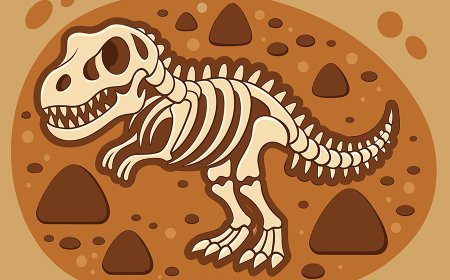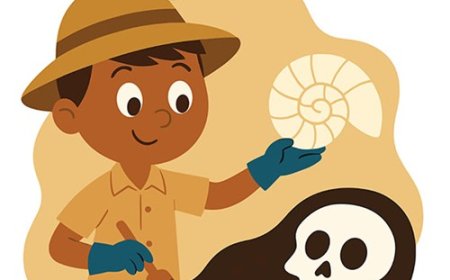Fossils for Students | Earth Science and Prehistoric Life
Learn about fossils how plants and animals are preserved in rock discover types like molds casts and amber and why fossils are important in Earth science
🌟 Introduction
Fossils are the preserved remains, traces, or impressions of plants and animals that lived long ago. They provide a window into Earth's past, helping scientists understand how life has changed over millions of years. Fossils can be as small as microscopic bacteria or as large as dinosaur skeletons. Most are found in sedimentary rocks, where layers of mud and sand covered and protected them over time. Fossils not only tell us what creatures looked like, but also what they ate, how they moved, and what environments they lived in.
🔍 What are Fossils?
A fossil is any preserved remains, impression, or trace of a once-living organism.
Types of fossils include:
-
Body Fossils: Actual remains, such as bones, teeth, or shells.
-
Trace Fossils: Evidence of activity, like footprints, burrows, or bite marks.
-
Molds and Casts: Impressions left in rock that later filled in with minerals.
-
Amber Fossils: Insects trapped in hardened tree resin.
🌍 Why are Fossils Important?
-
Clues to the Past: Show how plants and animals have evolved.
-
Environmental Evidence: Reveal what ancient climates and ecosystems were like.
-
Dating Rocks: Help scientists determine the age of rock layers.
-
Cultural Value: Inspire curiosity about dinosaurs and ancient life.
🧪 Everyday Examples
-
Fossilized dinosaur bones displayed in museums.
-
Ammonites, ancient shell fossils often found in limestone.
-
Amber jewelry containing insects.
-
Fossilized leaves that show details of prehistoric plants.
✨ Fun Facts
-
The word "fossil" comes from the Latin word fossilis, meaning "dug up."
-
Some fossils are over 3 billion years old!
-
Fossils of woolly mammoths have been found frozen in ice with fur and skin intact.
-
Only a tiny fraction of organisms ever become fossils-most decompose completely.
📌 Key Takeaways
-
Fossils are preserved remains or traces of ancient life.
-
They form mostly in sedimentary rocks.
-
They provide evidence of evolution, past climates, and Earth's history.
-
Examples include bones, footprints, and insects in amber.
🐾 Kid-Friendly Summary
Fossils are like nature's time capsules. They are the remains or traces of plants and animals from long ago, helping us learn about dinosaurs, ancient oceans, and prehistoric forests.
📚 Vocabulary Words
-
Fossil: Preserved remains or traces of past life.
-
Body Fossil: Actual remains such as bones or shells.
-
Trace Fossil: Evidence of activity like footprints or burrows.
-
Mold Fossil: A hollow impression left in rock.
-
Cast Fossil: A rock copy formed when a mold fills with minerals.
-
Amber: Hardened tree resin that can trap small organisms.
-
Paleontology: The study of fossils and ancient life.
-
Sedimentary Rock: Rock where most fossils are found.
-
Fossil Record: All known fossils, showing life's history.
-
Extinct: A species that no longer exists.
🧠 Interactive Quiz on Fossils
- Most fossils are found in
A. Sedimentary rock
B. Igneous rock
C. Metamorphic rock
D. Lava flows - Which is a trace fossil?
A. Dinosaur footprint
B. Shark tooth
C. Shell
D. Petrified wood - Amber fossils form when
A. Animals freeze in ice
B. Minerals replace bones
C. Insects get trapped in tree resin
D. Rocks melt under heat - Which scientist studies fossils?
A. Astronomer
B. Paleontologist
C. Meteorologist
D. Chemist - Which of these is a body fossil?
A. Footprint
B. Dinosaur bone
C. Tunnel
D. Ripple marks




















































